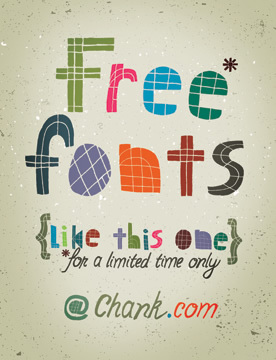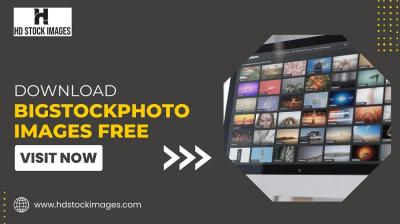Behance is a vibrant platform where creative professionals showcase their work, ranging from graphic design to photography. But did you know it’s also a fantastic resource for discovering unique fonts? Designers often share custom fonts or typography projects, making it a treasure trove for anyone looking to enhance their design arsenal. Whether you're a seasoned designer or just starting, Behance offers a plethora of choices that can help set your work apart. Let’s dive into how you can access and download these fonts!
Step-by-Step Guide to Download Fonts from Behance

Ready to snag some amazing fonts from Behance? Follow this simple guide to get you started:
- Sign Up or Log In: First things first, if you don’t already have a Behance account, it's time to create one. Just head to Behance.net and sign up. If you already have an account, simply log in.
- Explore the Font Section: Once you’re logged in, use the search bar at the top of the page. Simply type in “fonts” or “typography” to find projects that focus on fonts. You can also browse categories like Graphic Design or Web Design to stumble upon some hidden gems.
- Review Projects: Click on the projects that catch your eye. Many designers showcase their fonts in action, which helps you visualize how they can be used in your projects. Take your time to browse through their designs and find something that resonates with your style.
- Check for Download Links: Not all projects will have downloadable fonts, but many do! Look for a download link or button, usually located in the project description or as a prominent element in the project view. Designers often provide clear instructions on how to download their fonts.
- Follow the Licensing Instructions: Before you download, be sure to read the licensing information provided by the designer. Some fonts are free for personal use, while others may require a purchase or attribution if you use them commercially. Always respect the creator’s terms!
- Download and Install: After you find a font you like and understand its licensing, click the download link. The font will usually come in a zip file. Extract it, and you'll typically find font files in formats like TTF or OTF. To install, simply double-click the file, and your computer will guide you through the installation process.
- Use Your New Fonts: Now that you’ve installed your new font, it’s time to get creative! Open your favorite design software (like Adobe Illustrator, Photoshop, or even Microsoft Word) and start using your new typography. Experiment with different styles and see how they enhance your designs!
Downloading fonts from Behance is a fun and rewarding way to expand your design toolkit. Just remember to keep exploring and supporting the talented designers who share their work on this fantastic platform!
Also Read This: How to Create a Project on Behance Organizing and Presenting Your Work
3. Understanding Font Licensing on Behance
When you’re exploring fonts on Behance, it’s essential to grasp the different types of font licensing. This knowledge will not only protect you legally but also ensure you’re using the fonts in alignment with the creator's intentions. Here’s a breakdown of the most common types you may encounter:
- Free for Personal Use: Many fonts are available for free, but they come with restrictions. Typically, you can use these fonts for personal projects, like invitations or personal websites, but you’ll need to purchase a license for commercial use.
- Commercial Use: Fonts under this license can be used in business contexts, such as branding or advertising. Make sure to read the specifics, as some might require attribution to the designer.
- Creative Commons Licenses: Some fonts are shared under Creative Commons, which means they can be used freely as long as you adhere to certain conditions, such as giving proper credit to the creator.
- Custom Licenses: Occasionally, designers offer unique licenses tailored to their fonts. These can have specific terms, so it’s crucial to read them thoroughly.
Always check the licensing details on the font page before downloading. It’s also a good practice to keep a record of the license terms, especially if you plan to use the font for commercial purposes. Not only does this help you stay compliant, but it also fosters respect within the design community.
In summary, understanding font licensing is vital when downloading from Behance. Each font has its own set of rules, and knowing these will help you avoid any potential legal issues down the line.
Also Read This: How to Change Your Behance Web Slug: Customizing Your Portfolio’s URL Slug
4. How to Install Downloaded Fonts on Your Device
Once you’ve found the perfect font on Behance and have downloaded it, the next step is installation. The process varies slightly depending on whether you’re using Windows or macOS, but don’t worry—it’s straightforward! Here’s a step-by-step guide:
For Windows Users:
- Locate the Font File: After downloading, navigate to your Downloads folder. You’ll likely find a .zip file. Right-click on it and select Extract All to access the font file.
- Install the Font: Once extracted, right-click on the font file (usually a .ttf or .otf file) and select Install. Alternatively, you can open the Control Panel, go to Fonts, and drag your font file into the Fonts window.
- Verify Installation: Open any application that uses fonts, like Microsoft Word or Adobe Photoshop, and check if your font appears in the font dropdown list.
For macOS Users:
- Find Your Downloaded Font: Open Finder, go to your Downloads folder, and locate the downloaded .zip file. Double-click to extract it.
- Install the Font: Double-click the font file to open it in Font Book. Click on Install Font at the bottom of the preview window.
- Check Installation: Open any creative application, and your new font should be available in the font selection.
And that’s it! You’re now ready to unleash your creativity using your new fonts. Whether you’re designing a logo, creating a poster, or enhancing your website, having unique fonts at your disposal can make all the difference.
Also Read This: Link Your Behance Account and Connect with Social Media Platforms
5. Using Fonts in Your Projects: Tips and Best Practices
So, you've downloaded some stunning fonts from Behance, and now you’re ready to unleash your creativity! But hold on a second—there are a few tips and best practices you should keep in mind to ensure that your projects not only look fabulous but also maintain high-quality standards.
1. Choose the Right Font for Your Project
Fonts can evoke different emotions and set the tone for your designs. For example, a playful font like Pacifico might be perfect for a children's party invitation, while a sleek sans-serif typeface like Roboto works wonders for a tech startup's branding. Always consider your target audience and the message you want to convey.
2. Maintain Readability
While artistic fonts can be alluring, readability should never be sacrificed. If a font is hard to read, it diminishes the overall effectiveness of your design. A good rule of thumb is to pair decorative fonts with simpler ones to create a balanced look. For instance, using a bold serif font for the headline and a clean sans-serif for the body text can provide clarity and style.
3. Limit Your Font Choices
Using too many fonts can make your project look chaotic. Stick to two or three complementary fonts to maintain a cohesive design. This will help your project feel more polished and professional. A popular combination is pairing a bold display font with a simple, legible font for body text.
4. Be Mindful of Licensing
Before using fonts in your projects, always check the licensing agreements. Some fonts are free for personal use but require a license for commercial projects. Respecting these agreements not only supports font creators but also ensures you avoid any legal issues down the line.
5. Test in Different Environments
Fonts can look different across various platforms and devices. Always test your designs in the context they will be viewed. For instance, check how your chosen fonts appear on mobile devices versus desktop screens. This can help you catch any potential readability issues early on.
By following these tips, you can effectively incorporate the beautiful fonts you've found on Behance into your projects, making them not only visually appealing but also functional!
6. Exploring Other Platforms for Font Downloads
While Behance is a fantastic source for unique fonts, there are several other platforms where you can discover even more options to elevate your design projects. Let’s dive into some popular alternatives!
1. Google Fonts
This is a go-to resource for many designers. Google Fonts offers a vast selection of free, open-source fonts that you can easily integrate into web and print projects. You can browse by category, popularity, or even by specific styles, making it easy to find the perfect match for your design.
2. Adobe Fonts
If you have an Adobe Creative Cloud subscription, Adobe Fonts is included at no additional cost. This platform features a wide range of high-quality fonts that can be seamlessly synced across your Adobe applications. Plus, the integration is super smooth—just pick your fonts, and they’re ready to use in Photoshop, Illustrator, and more!
3. Font Squirrel
Font Squirrel is a treasure trove of free fonts, including many that are licensed for commercial use. The site’s “Font Generator” tool is also handy for converting fonts into web-safe formats. You’ll find an array of unique typefaces here, all curated for quality and usability.
4. DaFont
If you’re looking for something quirky or unconventional, DaFont is worth a visit. It offers thousands of fonts created by independent designers. Just take your time to read the licensing information on each font, as the usage rights vary widely.
5. Creative Market
For those willing to invest a little, Creative Market offers a wide selection of premium fonts. Many are created by talented designers and come with unique styles that can give your projects a distinct edge. Keep an eye out for weekly deals and bundles that can save you money!
Exploring these platforms can significantly expand your font library, giving you more creative options and helping you find the perfect typeface for every project. Happy font hunting!
 admin
admin








